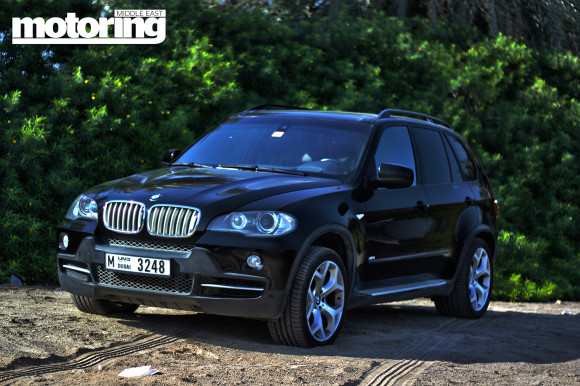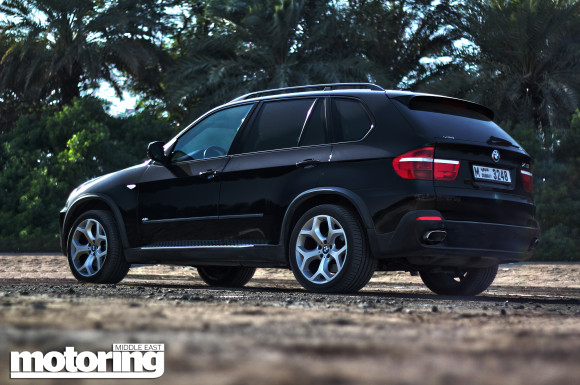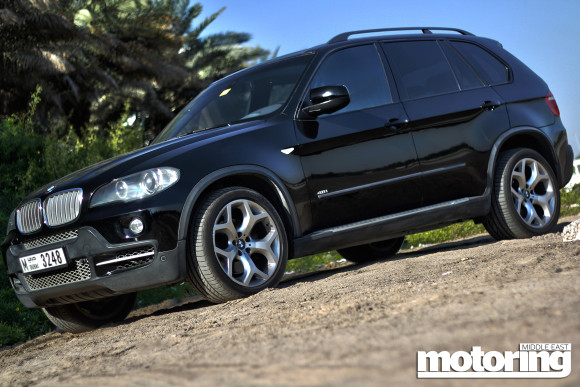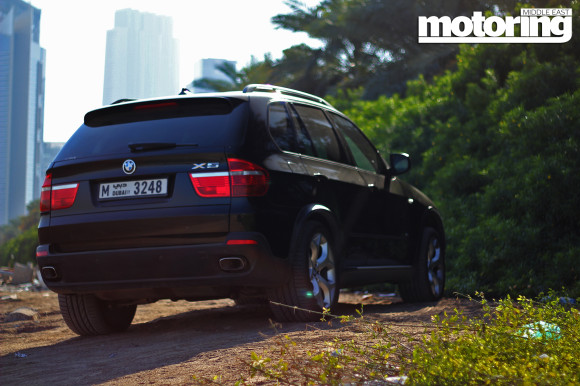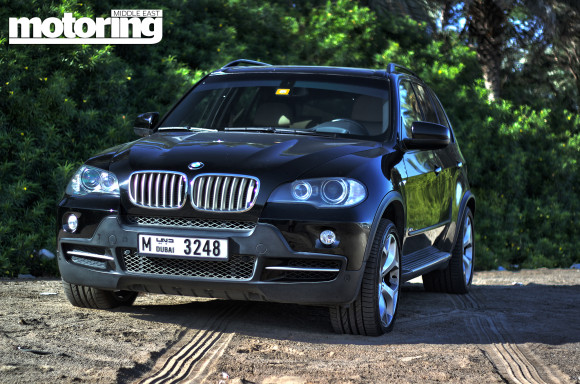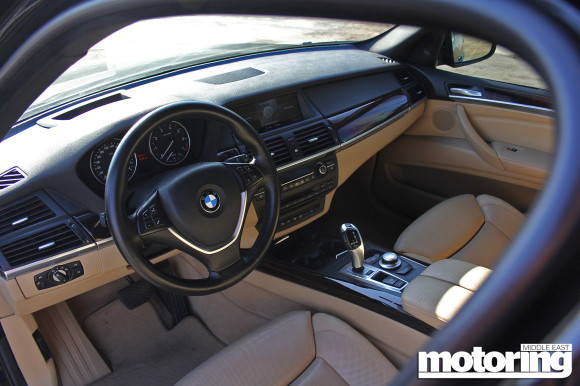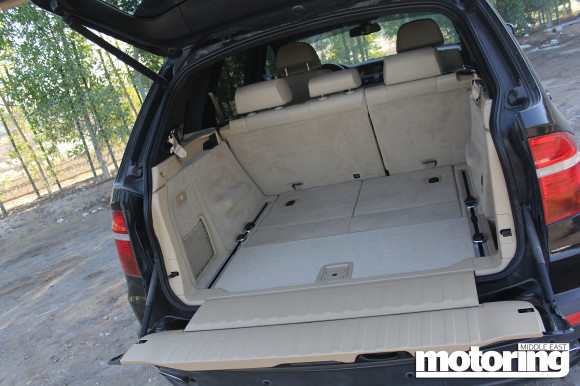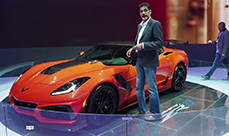Used Buying Guide BMW X5 2007-2013
All you need to know to buy BMW’s brutish SUV
By Shahzad Sheikh
Intro
In 1999 BMW introduced its first SUV, the X5 which was a mid-sized luxury ‘Crossover’ suited more to on-road than off-road performance, despite the fact that BMW did own Land Rover at that time, a British marque renowned for building go-anywhere vehicles.
But to make the X5’s intentions clear, BMW branded it a Sport Activity Vehicle (SAV). In fact its chassis was based on the 5 series saloon. Unsurprisingly it was at the time, and still remains, one of the sharpest SUVs to drive on the road with keen steering, eager performance, faithful handling and remarkable composure.
Whilst it has a certain level of off-road competency, we wouldn’t recommend this car if you’re planning to take a lot of trips into the desert or the Wadis.
The second generation car, codenamed the E70, was introduced in 2007 and is the subject of this guide. It featured a new ‘xDrive’ all-wheel drive system which was able to vary the amount of torque between the front and rear axles.
Thanks to a multi-plate wet clutch in the gearbox, whilst it normally sends 40% of the drive to the front and 60% to the rear (suited to BMW’s normally rear-wheel drive ethos) if it detects a wheel slipping or losing grip it can redistribute power – as much as 100% of it – to either the front or rear, depending on where the grip is. And the computers enable it to do this within a tenth of a second.
Combining this with the ABS anti-locking braking systems and the DSC traction and stability control systems, means that it can ensure that the power goes to the wheels with the most grip – this is hugely effective in improving the handling of the X5 on the road in slippery conditions.
The second generation X5 was also 60mm wider, 165mm longer, with a wheelbase increased by 110mm, but kept the 1766mm overall height.
It featured BMW’s iDrive system for its in-car systems and a drive-by-wire electronic ‘joystick-style’ gearshift.
There were also LED lamps and options included head-up display (instrumentation projected onto windscreen in front of the driver), active steering (which changes steering ratio/input required depending on speed), active suspension and hydraulic servo-assisted anti-roll bars to counteract body roll and prevent excessive body-lean during cornering.
In 2010, an extreme high-performance ‘M’ version was also introduced but that is not covered by this Used Buying Guide BMW X5 2007-2013.
Why buy it?
If you’re looking for a big, premium SUV with excellent on-road manners and performance, and can managed mild off-the-tarmac excursions, then the X5 is worth a look. If you’ve had to upgrade from a sports car because you need something more spacious and practical, but still want to get a kick out of your commute to work, then the X5 could definitely be one to consider.
Why not buy it?
If you like to spend weekends heading out into the desert or are eager to explore the wadis or revel in attempting to conquer high mountain passes and tall dunes, you might want to look elsewhere, probably at more dedicated off-road vehicles.
And that’s not just because this car is not quite as good at the rough stuff as some of its rivals, but because it’s high-end product, probably shod with some nice wheels and slick low-mounted spoilers and skirts that you wouldn’t want to spoil or scratch!
Model details
- Initially available with two engines, a 3.0-litre six-cylinder and a 4.8-litre V8 mated to a six-speed automatic transmission.
- 3.0-litre featured a straight-six producing 268bhp at 6650rpm and 232lb ft of torque at 2750rpm, this gave it a 0-100kph time of 8.1 seconds, a top speed of 210kph and 10.2L/100km fuel economy. From 2008 this was dubbed the xDrive30i – but was the same engine.
- 4.8-litre featured a V8 cylinder engine producing 360bhp at 6300rpm and 370lb ft torque at 3400-3800rpm, giving it a 0-100kph time of 6.5 seconds, a top speed of 240kph and 12.0L/100km fuel economy. From 2008 this was dubbed the xDrive48i – but was the same engine.
- 7-seats were available as options, with the last row of seats folding flat into the floor – best for occasional use and children
- Top models have air conditioning vents for third row as well as full four zone climate control with switches for the middle row.
- 18-inch wheels are standard but optional wheels go up to 20-inch.
- 2010 update for 2011 model year included a facelift that saw revised styling for the front and rear bumpers, air intakes and headlights along with new colours and options, with new Turbo charged engines that were lighter and more powerful, and mated to 8-speed automatic transmissions.
- 2011 xDrive35i was a 3.0-litre straight-six cylinder Turbo engine producing 302bhp at 5800rpm and 300lb ft or torque at 1200-4500rpm, this gave it a 0-100kph time of 6.8 seconds, a top speed of 242kph and 10.1L/100km fuel economy.
- 2011 xDrive50i was a 4.4-litre V8 twin-turbocharged engine producing 402bhp at 5500-6400rpm and 440lb ft of torque at 1750-4500rpm, this gave it a 0-100kph time of 5.5 seconds, a top speed of 250kph and 12.5L/100kmm fuel economy.
- Optional equipment now included active cruise control, lane departure alert, 360-degree view cameras.
- Some cars come with the M Sport pack featuring larger wheels, bodykit and M Sport steering wheel.
- The E70 BMW X5 has been rated Good (the best rating) for moderate front overlap and side impact crash tests by the American Insurance Institute for Highway Safety (IIHS).
Which one to buy?
If you’re going for a pre2011 model, choose a well-equipped range-topping version with the larger V8 like the car featured in these pictures. It’s the most desirable edition from that period with good performance and interior appointments.
If you can opt for a 2011 onwards model, the xDrive35 is an impressive motor which offers almost as much performance as the previous V8, but with much better fuel economy.
The X5 looks best in strong dark metallic colours with decent alloy wheels. For resaleability, leather interior upholstery is a must.
What to look out for?
- A full service history is essential for a high performance and technically advanced car like this. Ideally this should be from a main dealer, particularly if the car is less than three years old and if it has remaining warranty.
- X5 owners tend to drive them hard, so check for tyre wear and tread.
- Kerbed alloys and wheels could also have caused poor alignment.
- Make sure you test drive the vehicle, the steering wheel should be vibration free and quick to respond. In a straight line, loosen your grip and make sure the steering remains smooth and tracks straight.
- Get the car inspected independently if possible, both for mechanical issues and to ensure it hasn’t been in an accident. Even minor repairs and replacement parts can be costly on an X5.
- Have the cooling system checked, they often need to be overhauled at high mileages, check for coolant leaks particularly on the V8, often from a water pipe under the intake.
- Check for issues with the timing chain at very high mileages.
- Brake wear can be excessive – X5s tends to be driven hard and as they’re heavy cars the brakes pads have to work much harder. The progression of the brakes should be even and firm with strong bite. Make sure there is no judder or vibration, except under emergency braking when the ABS kicks in.
- Transmission fluid is supposed to be for the lifetime of the vehicles, but many owners have benefited from changing it at higher miles.
- There are some reports of the screen washer jets being damaged due to the wrong kind of washer fluid being used.
- Check the electric windows and sunroof if fitted as repairs could be expensive if these are faulty and the car is not under warranty.
What to pay?
Most X5s you’ll find will in this market will be the V8 versions and it is possible to pick up a 2007 car for as little as AED55,000, though budget around AED70k for a good one. To get into a facelifted 2011 model year car, you’ll be looking at around AED125k upwards, even for the xDrive35i, upto AED200k. To go for a last of the line 2013 car budget AED250k-280k for a good one.
Prices correct at the time of posting.
Let us know your experiences of owning/buying a BMW X5 in the comments below

